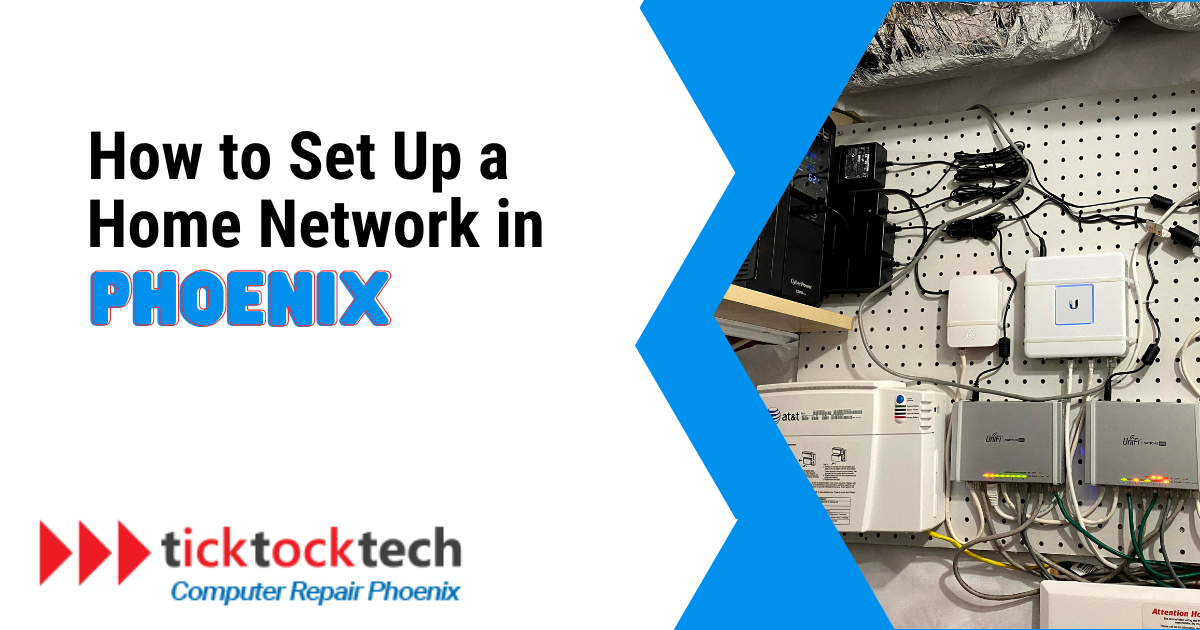Connectivity is an important part for gadget users, especially with multiple gadgets. If you have a workspace at home, or you manage to have a group of people in a small space, this is an important setup to look into. Home networks are a collection of networked devices set up inside a home to provide internet access, data exchange, and communication between multiple users’ gadgets. It makes it possible for many devices, including computers, mobile phones, tablets, smart TVs, game consoles, and smart home appliances, to connect and communicate with one another.
Related: Differences between Switches and Routers
A router or other central device acts as the hub for linking all the gadgets in a typical home network. All household devices that are linked to the router can access the internet once it has established a connection with the internet service provider.
They make it easier for devices to share files, printers, and media, enabling smooth data flow. Additionally, they make it possible for several devices to connect to the internet at once, enabling communication, streaming video, online gaming, and other online activities. Having different types of devices to connect, needs a guideline for smooth running, let’s dive into how to get it done.
1. Select a router
Pick a router that is appropriate for the number of devices and size of your house. Think about variables like range, speed, and features offered. A simple router will work fine if your house is smaller or you have fewer gadgets.

A stronger router with wider coverage, however, can be advantageous for larger houses or households with lots of gadgets. To select a good wifi, here are some steps to take
- Establish your home’s size, the number of devices you have, and your internet use needs. This assists you in determining the router characteristics you require.
- To achieve quicker speeds and better performance, choose Wi-Fi routers that are compatible with the most recent Wi-Fi standards (such as Wi-Fi 5 or Wi-Fi 6).
- Purchase a Dual-band or Tri-band device. 2.4GHz and 5GHz are the two frequency bands that dual-band routers offer for improved device compatibility. For better performance in busy areas, tri-band routers add 5GHz band.
- To ensure smooth file transfers, gaming, and streaming, look for routers with high-speed ratings (measured in Mbps or Gbps).
- Consider routers with coverage that is enough for the size of your home. For increased coverage in bigger regions, look for technologies like beamforming or mesh network solutions.
- To defend your network from possible dangers, look for built-in security features like firewall protection, WPA3 encryption, and support for guest networks.
- Decide on a pricing range and compare it among respected brands. Remember that spending money on a high-quality router can lead to improved lifetime and performance.
- Select routers from trustworthy manufacturers recognized for their dependability, customer service, and frequent firmware upgrades.
See: Best Routers to Buy in 2023
2. Connect your Router to the modem
An Ethernet cable is used to connect the router to your modem for internet access. Your internet service provider (ISP) will supply the modem to connect your home network to the internet.
Related: Differences between Modem and Routers
Your router may spread internet access to all associated devices thanks to this connection. Here is how you can make the connection in a few steps.
- Make sure your modem is off and unplug the power cable. Locate the Ethernet port on the modem’s rear. Either “Ethernet” or “Internet” ought to be written on it.
- Connect the Ethernet cable’s one end to the modem’s Ethernet port.
- Then, with the other end of the Ethernet cable, connect it to your router’s WAN (Wide Area Network) or Internet port. When compared to LAN (Local Area Network) ports, this port is typically branded differently, frequently in a different color or as “WAN” or “Internet.”
- Turn on your modem after connecting the power cord. A few minutes may pass as you wait for it to fully power up. Check to see if the modem’s internet connection is reliable and operational.
- Connect the router’s power cord, then turn it on. A minute or two may pass while you wait for the router to finish initializing.
- Check the LEDs on the router and the modem. If the devices are connected successfully, the lights should show that. A connection should typically be operational when the WAN or Internet light on the router is steady or flickering.
3. Set up your router
By entering the given IP address into a web browser, you may access your router’s settings. You may alter several network settings using this interface. Create a distinct and secure network name (SSID) so that devices may see it when they look for accessible networks. Make a strong password as well to safeguard your network from illegal access.

4. Sync up your gadgets
You may connect your devices to the network once your router has been set up. The majority of gadgets, including smartphones, laptops, and tablets, have wireless capabilities built in. To create a wireless connection, just perform a search for accessible networks, choose your network’s SSID, and type the password. As an alternative, you may connect devices to the router directly via Ethernet cables for a wired connection, which can offer faster and more reliable rates.
5. Analyze your network.
Once you’ve connected your devices, it’s crucial to test your network to make sure everything is operating as it should. To ensure you’re getting the anticipated bandwidth from your ISP, you may check your internet speed utilizing online speed test tools. To further verify that you have dependable internet connectivity, consider logging into a variety of websites and online services. For performance evaluation of your network, you may use network monitoring tools or built-in diagnostics offered by your router. To achieve optimal performance, consider variables including network speed, latency, and packet loss.
6. Set your network parameters.
The majority of routers come with sophisticated settings that you may alter to suit your tastes. These choices include Quality of Service (QoS) settings to give particular types of network traffic priority, parental controls to limit internet access for particular devices or users, and port forwarding to access devices remotely. Network traffic patterns can also be studied using network monitoring tools. This makes it easier to see any unusual or dubious actions, including illegitimate connections or overly consuming bandwidth.
7. Network Security
Turn on the security measures that your router offers to safeguard your home network from potential attackers. To protect data transfer and prevent unwanted access, this may involve implementing network encryption (such as WPA2) and putting in place a firewall. Maintain the most recent security fixes by routinely updating the firmware on your router.
- For the Wi-Fi network and admin interface of your router, create a special and secure password. Avoid choosing passwords that are simple to guess; instead, think about using a mix of letters, numbers, and symbols.
- Set your Wi-Fi network’s encryption to WPA2 or WPA3. Wireless communications are made more secure via encryption, which also guards against illegal network access.
- Modify the router manufacturer’s default network name (SSID) and password. Customize these parameters to increase security since using the default values might leave your network open to assaults.
- For your router, look for firmware upgrades, and install them right away. Security patches that correct vulnerabilities and improve network protection are frequently included in firmware upgrades.
- Activate your router’s built-in firewall to prevent unwanted access and keep an eye on network activity. To add degree of protection, think about establishing a guest network that isolates visitor devices from your primary network.
FAQs
Setting up a home network can generally be done without professional assistance. Most routers come with user-friendly interfaces and setup wizards that guide you through the process. Additionally, online resources and manufacturer’s instructions provide step-by-step guidance. However, if you encounter any difficulties or prefer expert assistance, you may consider seeking professional help from network technicians or IT service providers in Phoenix.
A router is a crucial component for setting up a home network, as it acts as the central hub for connecting devices and enables internet access. While alternative network setups exist, such as using a network switch or access point, they typically require a router to establish the connection to the internet service provider. Therefore, it is highly recommended to have a router for setting up a functional and efficient home network in Phoenix or any location.
No, you can set up a home network in Phoenix with any internet service provider (ISP) of your choice. Different ISPs offer various plans and packages, so choose one that best suits your needs in terms of internet speed, reliability, and customer service.
Conclusions
Connectivity is essential for users with multiple gadgets, especially in a workspace or small shared space. Home networks enable internet access, data exchange, and communication between multiple devices like computers, smartphones, and smart home appliances. To set up a home network, selecting an appropriate router is crucial.
Consider factors like range, speed, and features offered. Connect the router to the modem using an Ethernet cable, allowing all associated devices to access the internet. Set up the router’s settings, and create a secure network name (SSID) and password. Connect devices wirelessly or via Ethernet cables. Analyze and optimize your network’s performance, and prioritize network security by enabling encryption, firewalls, and regular firmware updates.

